
© Costin Radu. (Click image for larger version)
Royal Danish Ballet
Napoli
Copenhagen, Royal Theatre
19 February 2014
kglteater.dk
This review should perhaps appear under the title ‘Napoli revisited, part 3′: each time the Royal Danish Ballet’s updated version of their Bournonville masterpiece reappears, Nikolaj Hübbe and Sorella Englund have had another try at getting their production right. This is a zero-sum edition, with welcome improvements cancelled out by misguided innovations.
Act 1 has been tidied up and lightened up: some of the extra busyness has been suppressed and some of the darker undertones have gone – for instance, in the cast I saw the role of the street-singer has lost its painful edge and reverted to pure comedy. As a result this act has lost a lot of the impact it had 4 years ago, and if you could ignore the complete erasure of any reference to religion it would feel not that different from the old version, only in different clothes. Act 2 is unchanged so far as I could tell, and succeeds on its own terms although dramatically it has very little to offer. It’s the problematical third act that has been remodelled this time, and it starts off quite well. I’ve complained before that the miraculous reappearance of the ‘drowned’ Teresina, half-way through her own funeral, seemed to cause hardly more surprise than would the return of a lost umbrella: the big moment is now given a more expansive treatment, which gradually leads into a new pas de deux for Teresina and Gennaro, in which they so persuasively show the depth of their love for each other that even Teresina’s mother is finally persuaded that they should be allowed to marry. The choreography (Hübbe’s own. I assume) isn’t exciting but it does carry the story forward.
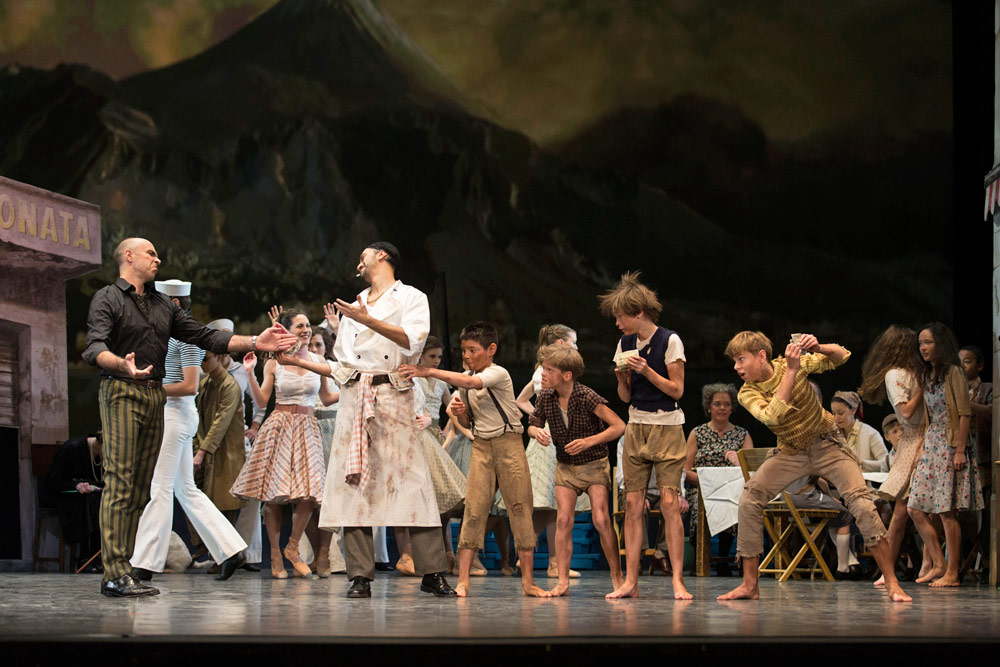
© Costin Radu. (Click image for larger version)
Then a drop-curtain falls, carrying the ballet’s subtitle – Il Pescatore e la sua Sposa – to let us know we’re moving from mourning to rejoicing, and when it rises again we’ve clearly moved on to the post-wedding celebrations. Everyone is sitting at cafe tables, drinking and laughing, and I do like the way the master of ceremonies goes round and chooses the people he wants to start the dancing; off we go into the pas de six. Things are looking good – the dancers’ Sunday best clothes are far more convincing than the fancy dress they wore when the production was new, and the very strained notion of a masque of the seasons has been completely dropped. But – oh dear – when it comes to the solos we discover that Teresina and Gennaro have been banished altogether from this section, the solos associated with them given to other dancers, and so far as I remember they’re not even watching from the sidelines. Instead they return to dance the pas de deux Hübbe originally created for this production, which was never particularly interesting and now seems completely redundant – they’ve already told us, at the start of the act, how much in love they are, and a conventional ‘wedding’ pas de deux adds nothing and also spoils the carefully planned build-up of excitement through the pas de six, the tarantella and the gorgeous finale. (No gunshots there, by the way – fireworks instead.) But most importantly we lose the sense of Teresina and Gennaro as part of the community, and they lose another chunk of the traditional choreography.
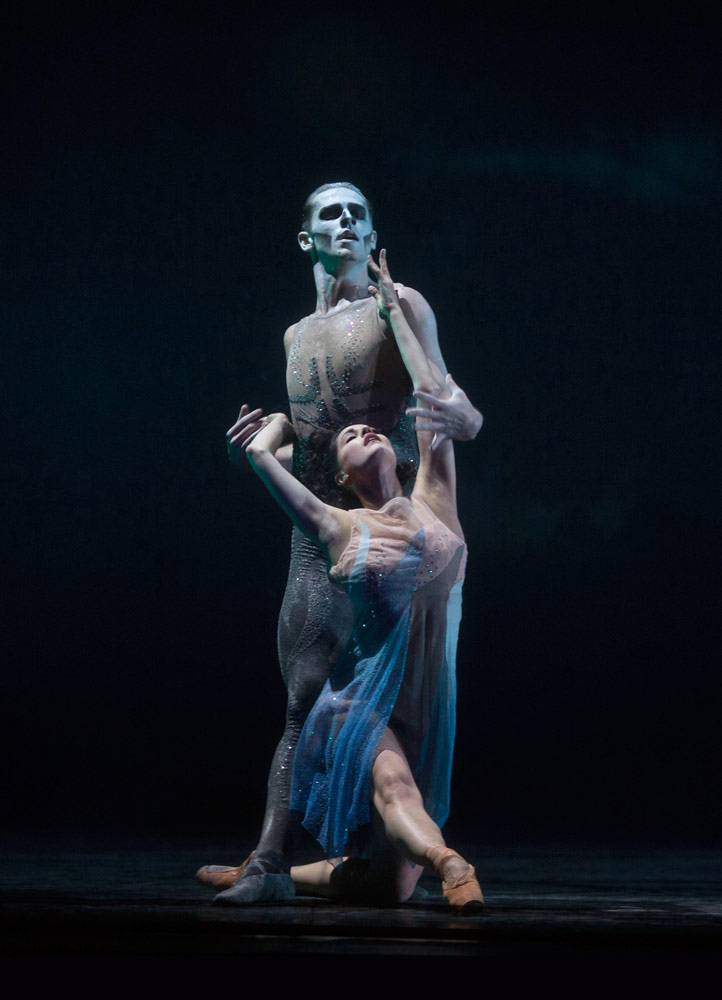
© Costin Radu. (Click image for larger version)
The scheduled cast for this performance featured the new partnership of Alban Lendorf and Alexandra Lo Sardo, but in the event Lendorf was replaced by Alexander Stæger, who is also dancing Gennaro in another cast. I don’t imagine the new pair can have had much rehearsal time together and though they seemed to have no technical problems, their emotional relationship didn’t come over very strongly. Lo Sardo is having an exciting month or so, dancing Teresina for the first time and also making her debut as Manon (also with Lendorf) a few days after this performance. She’s someone I’ve been hoping to see more of since she danced an amazing 2nd movement in Symphony in C a few years ago, and I really enjoyed what she did here, especially in Act 1 which gives her the best chance to show off her fiery spirit. Stæger is a bit of a puzzle to me – he’s one of those dancers who constantly makes me think that somewhere in the repertoire there must be a role in which he’d be magnificent (RB watchers: think Edward Watson without the hyper-flexibility) but it’s never quite the one that he’s actually doing. He’s a fine, intelligent actor but his style is slightly angular and not the perfect fit for Bournonville.
Benjamin Buza, who danced Golfo, the sea-king, is someone else who’s making huge steps forward this season – he’s also the first-cast Lescaut in Manon – and it’s easy to see why: he has a stage presence and authority remarkable in someone who’s still in his early twenties. It was good to see Jean-Lucien Massot back on stage, as one of Teresina’s persistent suitors, and I liked Poul-Erik Hesselkilde’s transvestite street-singer much better now cheerfulness has returned to the role. Josephine Berggreen has a difficult task to make us understand and sympathise with the role of the Pilgrim – she’s the one who has to replace the role of religion in the plot – and I admired the dignity she brought to the role.

© Costin Radu. (Click image for larger version)
The company put out a very strong team for the pas de six – four principals, with another one to dance the extra first solo, and the two newest soloists. There were only two Danes among them, though – Ulrik Birkkjær and Susanne Grinder – and although everyone had something to contribute, the uniformity of style was missing. But they dance so little Bournonville these days – how can newcomers be expected to look as if it’s part of their heritage?
Most of this run of performances was sold out, or very nearly so, so the Copenhagen audience evidently appreciates what Hubbe is doing. To me, though, this latest revision of Napoli felt like a step too far, with what’s left of the Bournonville choreography too thinly spread: an entertaining show, but the euphoria-inducing excitement seems to be leaking away.












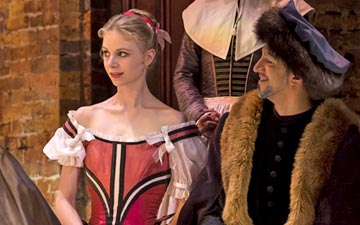
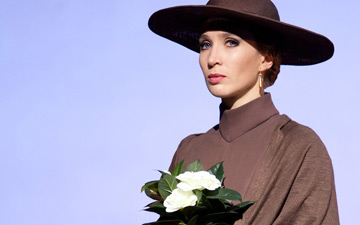

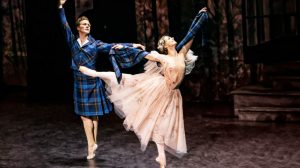
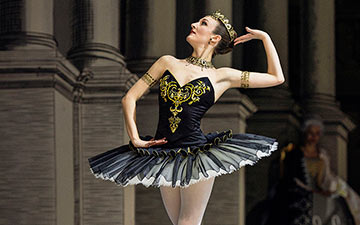
You must be logged in to post a comment.